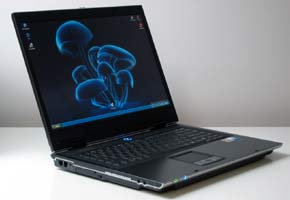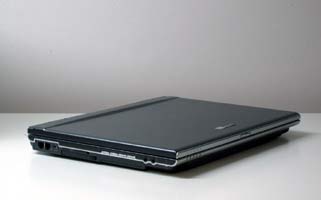Building A Whitebox Notebook: Part 1
Can I build my own laptop?
|
|
|
For years the only way to buy a notebook computer was to buy a bundled notebook from a major company. This means that you are likely to get all the features you do not want and none that ones that you are are in need of. The days of having limited choices in the notebook market are near extinction thanks to Intel’s big push into the mobile market with their Centrino campaign and notebook manufacturers, such as ASUS, have begun to heavily market & push their whitebox notebook line. Over the next week, we will give a series of articles which will show you how we put together our ASUS M6N notebook, with today showing you the parts needed and what we picked to build our first ever whitebox notebook.
What is a Whitebox Notebook?
Since we have been working closely with ASUS on their notebooks we will use them as our example to answer this question. In 2003 ASUS began to emphasize their barebones notebook strategy using a whitebox model. A whitebox notebook basically being a barebones notebook that was sold without processor, memory, hard drives and an opreation system. This suited many small and mid sized resellers just fine, and they individually configured the whitebooks, added their own logos, and sold them under their own brand names. The notebook market in 2003 did so well for ASUS they decided from 2004 onward that they would have two ASUS notebook product lines.
The 2004 ASUS Notebook Lines:
- Factory Configured
- Built on ASUS
As the name states the ASUS “factory configured” notebooks come complete and ready to run. Products like this, including the ASUS S5Ne, are marked with the ASUS logo and are backed by a full ASUS warranty. The other notebook product line is the “Built on ASUS” line of reseller-configured, barebones notebooks. These are marked with the “Powered by ASUS” logo (resellers will have the option using their own brand logo). Resellers have the full ability to custom tailor these notebooks for their end-customer’s needs by adding the CPU, memory, hard drive, and OS. This flexibility helps resellers minimize costs by allowing them to buy components just before the notebooks are configured – freeing them from having to carry a large inventory of price-volatile components. In addition, this line of barebones are is also backed with a full warranty direct from ASUS – an advantage over generic unbranded whitebox notebooks.
Should I build a Whitebox Notebook?
Consumers in general are still largely unaware of barebones notebooks and the advantages they offer over preconfigured notebooks from the big name manufacturers, including benefits such as unique styling, flexible customization, better reseller support, and superior value overall. After knowing this why would you ever want to purchase another pre-configured notebook? By going with a whitebook notebook you get all the features you want at a lower price point!
What’s The Deal With Centrino?
The recent Intel Centrino advertising campaign has been a huge success, but more often than not I hear someone refer to “Centrino” as a processor. This can’t be more wrong! Rather in order for a laptop computer to be called “Centrino“, it must have the new Pentium M processor , an Intel 855 chipset , and an Intel PRO/Wireless 2100 or 2200BG network card. Once a laptop is configured with these features it is officially a Centrino notebook. Basically think of Centrino as a platform type for notebooks. The advantages of the Intel Centrino mobile technology, is that the forementioned components work together to enable high performance, extended battery life and integrated wireless LAN capability in thinner and lighter notebooks.
Building Our Whitebook
We figured that it would be best to actually go out and piece together a whitebook and show you what you need and give you a pretty detailed guide on how to build a Centrino notebook. The first step was to find out what parts we needed to build a whitebook. The list was simple as there are not too many parts needed!
The List:
- Whitebox Notebook Chassis
- Intel Pentium-M Processor
- 200-Pin SO-Dimm Memory
- Notebook Hard Drive
- Intel PRO/Wireless Card
- Optical Drive
So with the list completed we have an idea of just what parts we need to pick out for our notebook. For the notebook we are building we want it to be able to do all of our business applications, image editing, gaming, wireless internet ready,the ability to play all our videos/music, and yet still be light enough to endure traveling on a 4 hour plane flight via battery usage. So basically the notebook that we are trying to piece together should be able to do everything. This is not an easy task and sure isn’t something you can find off the store shelf at your local computer store waiting to be purchased.
Enough talking about what you need! Let’s take a look at what we used to build our notebook.



Comments are closed.